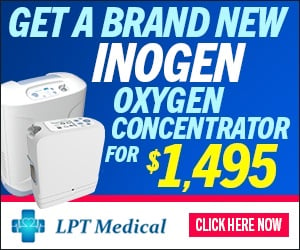 |
| Image Courtesy of Melissa on Flickr |
If you or someone you love has COPD, you might be concerned about diet and nutrition. What kinds of foods should you eat to stay healthy, and what should you avoid?
Eating right and sticking to a healthy diet is one of the best things anyone can do to feel good and keep their body healthy, with or without a chronic disease. In reality, however, eating well is difficult to do on a daily basis.
Even though just about everybody knows how important good nutrition is, many people still don't practice a healthy diet. This is sometimes due to a lack of time and motivation, but can also be a result of simply not knowing what kinds of foods are actually good for you and not.
If you have COPD, it's especially important to understand what a proper diet looks like and how to incorporate healthy foods into your everyday life. That's why, in this post, we're going to tell you about a wide variety of healthy foods you can eat to help you feel better and stay healthy with COPD.
Why a Nutritious Diet is Important for COPD
 |
| Image courtesy of FoodFacts on Flickr |
Living with a disease like COPD can make everyday tasks like eating more complicated. Many people with COPD even have to eat special, high-calorie diets to make up for the strain that the disease puts on their bodies.
COPD forces you to pay extra attention to many aspects of your health, including diet and nutrition. If you don't get all the vitamins and nutrients you need, you can experience increased COPD symptoms and accelerate how quickly your disease gets worse.
When you are struggling to manage a chronic disease like COPD, it's important to make every meal count by choosing foods that are wholesome and nutrient-dense. Eating healthy meals full of lots of fruits, veggies, whole grains, and healthy fats is key for maintaining a healthy weight and keeping your body strong.
You should also know that that what's not in certain foods is sometimes just as important as what is. Unhealthy foods with empty calories don't do you any good, and in the worst cases can contribute to weight gain, heart disease, and other health problems. That's why you should avoid processed foods and anything packed with sugar, simple carbs, and unhealthy fats.
Even among foods considered “healthy,” some are better than others at supplying your body with the nutrients it needs. There are many fruits, veggies, meats, and dairy products that are particularly rich in important vitamins, minerals, fatty acids, and other things your body needs to stay healthy with COPD.
It's much easier to make healthy decisions when you know what's good for you and have a lot of options to choose from. That's why we're providing you with the following list of 21 healthy foods for COPD to help you get started.
While you don't have to get every single item on this list, you should still eat a varied diet of healthy foods from different fruit, vegetable, dairy, and grain categories. This list will introduce you to the nutrient content and health benefits of a wide variety of foods so you can better understand how to meet all your nutritional needs.
How the Food You Eat Affects Your COPD

Before we get to the list, there are a few special factors you should take into consideration when planning a healthy diet for COPD. Certain foods, large meals, and weight gain can actually make your symptoms worse, so you have to pay extra special attention to what you eat.
{{cta('fa8abc2a-1e88-4fa3-82fd-1cb5b9ed43b2','justifycenter')}}
Inflammation
First of all, people with COPD should avoid eating foods that are known to cause inflammation. That's because inflammation puts strain on your body and takes energy away from your lungs, where it's most needed.
Foods that can cause inflammation include high-sugar foods like soda and sweets as well as processed meats like sausage. Besides being inflammatory, these foods are hard on your body and don't contain the nutrients your body needs to effectively manage your COPD.
Instead, you should eat healthy produce like leafy greens and fruits and veggies with lots of vitamin C and vitamin A. This helps your body get the nutrients it needs to prevent and manage inflammation and can improve how well your lungs function.
Manage Weight Gain and Weight Loss

Maintaining a healthy weight is also a top health priority if you have COPD. Both being underweight or being overweight can hurt your lung function and make it more difficult to breathe.
If you are underweight, you're likely to have worsened symptoms like weakness, fatigue, and shortness of breath. Weight loss and malnutrition can also weaken your immune system, break down your muscles, and increase your chances for infection, exacerbations, and death.
Excess weight is particularly dangerous for people with COPD, because it can quickly start a downward spiral of physical decline. Being overweight makes it more difficult to stay active, puts extra weight and strain on your chest that makes it difficult to breathe, and also increases the amount of oxygen your body needs to function.
Pay Attention to Antioxidants

Research shows that people who have COPD experienced increased oxidative stress in their lungs and elsewhere in their bodies. This means that they have an excess of inflammatory compounds, called oxidants, that can cause irritation, tissue damage, and other complications.
Every person's body produces antioxidants, which are molecules that neutralize oxidants and prevent them from doing harm. Most healthy people are able to produce enough anti-oxidants to keep the oxidants in check, but people with COPD often don't.
Research shows that people with COPD have an excess amount of oxidants that throws off their body's delicate oxidant/antioxidant balance. When this happens and the balance tips in favor of oxidants, it causes oxidative stress.
That's why some doctors recommend that people with COPD counteract their elevated oxidant levels by increasing their dietary antioxidant intake. There are many fruits, vegetables, and other foods that are rich in antioxidants, and it's thought that eating more of these foods can help your body restore a proper oxidant/antioxidant balance.
Some of the most common antioxidants include vitamin C, vitamin E, beta-carotene, selenium, and manganese, which are abundant in a variety of fruits and vegetables. However, research on antioxidants in foods is still ongoing, and researchers don't yet know if eating antioxidant-rich foods is a reliable way to combat oxidative stress.
Eat Fewer Carbohydrates

If you have COPD, you should avoid simple carbohydrates at all costs. Not only are simple carbs empty calories, but having too many carbohydrates in your diet can actually make your COPD symptoms worse.
To understand how carbohydrates affect COPD, you have to first understand how your lungs process carbon dioxide. Carbon dioxide is a waste product that is made from all kinds of metabolic processes in your body, including when you digest food.
When foods are broken down, the carbon waste products go into your blood and are carried to your lungs. When you breathe, the carbon waste is expelled from your body via carbon dioxide in your breath when you exhale.
Carbohydrates, in particular, tend to produce a lot of carbon waste compared to other nutrients, like fat and protein. This means that carbs increase the burden on your lungs to expel the carbon dioxide waste. which can lead to increased COPD symptoms like breathlessness and wheezing.
This is why most doctors recommend that people with COPD eat a diet that's high in fats and low in carbohydrates. This reduces strain on the lungs, reduce COPD symptoms, and make it easier to breathe and exercise.
Eat Small Meals

Doctors often recommend that people with COPD forego traditional mealtimes and instead eat 4-5 smaller meals spaced throughout the day. That's because, when you eat larger meals, it can put pressure on your lungs and diaphragm and make it more difficult to breathe.
Smaller meals are easier to digest and are less likely to cause bloating, indigestion, and breathing discomfort. It also helps you control your portion sizes and eat a wide variety of healthy foods every day.
Eat Nutritious, High-Calorie Foods

Many people with COPD have to eat extra calories every day to make up for the extra energy that their respiratory muscles use to breathe. If your doctor puts you on a high-calorie diet, it's important to fill in those extra calories with healthy, nutrient-packed foods.
Many of the highest-calorie foods are also the least nutritious; think of ice cream, soda, potato chips, and other processed snacks, for example. Instead of eating junk foods with empty calories, choose nutrient-dense, high-calorie foods like nuts and dairy. That way you can get enough calories and maintain a healthy weight while also limiting the amount of salt, sugar, and simple carbs in your diet.
A Final Consideration: Talk to Your Doctor
Depending on your unique physiology and the severity of your disease, you might have special dietary needs and restrictions. That's why, as one final consideration before we get to the list of healthy foods you should eat for COPD, we want to emphasize the importance of talking to you doctor about diet and nutrition.
Your regular doctor or a dietitian can often give you valuable, individualized advice that you can't get anywhere else. They can also help you put together a personalized nutrition plan to help set you on the right track.
As long as you don't have special dietary restrictions, you can use all the foods on this list to make a wide variety of healthy meals. So, without further delay, here's 21 healthy foods you can eat as part of a healthy diet for COPD.
21 Healthy Foods You Can Eat to Stay Healthy with COPD

Foods Packed with Healthy Carbohydrates
Research shows that, when you have COPD, eating too many carbohydrates increases the strain on your respiratory system and makes it more difficult to breathe. While a certain amount of carbohydrates are necessary for a balanced diet, you should eat them in moderation and choose whole foods packed with complex carbohydrates like whole grains and wheat pastas.
Researchers recommend that people with COPD get about 25% of their calories from carbohydrates.
Ancient Grains (Including Quinoa, Barley, and Buckwheat)

Quinoa, buckwheat, and barley, are among a group of whole grains often known as “ancient grains.” Ancient grains are different from modern grains in the sense that they have changed very little over the past several hundreds of years.
Ancient whole-grains are especially rich in fiber, protein, and vitamins, and also tend to be more calorie-dense than modern whole grains. For example, one cup of spelt has about 7.5 grams of fiber and 10.7 grams of protein, while a cup of brown rice only has about 3.5 grams of fiber and 5 grams of protein.
Quinoa, black rice, and other ancient grains are easy to prepare and great for digestion. They also contain high amounts of magnesium, which is extremely important for lung function and may even help prevent COPD exacerbations.
What's more, quinoa and buckwheat are naturally gluten-free, which makes them a great option for people with Celiac disease or other gluten intolerances. If you're looking to add healthy carbohydrates to your diet, the ancient grains are a great place to start.
Here are some examples of healthy ancient grains:
- Quinoa
- Millet
- Black BarleyBlack Rice
- Spelt
- Teff
Whole-Grain Breads and Pastas

Whole grains like wheat breads and wheat pastas are an important part of any healthy diet, but they can be particularly important for people with COPD. A diet rich in whole grain foods can reduce inflammation, improve digestion, help you maintain a healthy weight, and even reduce your risk of heart disease and diabetes.
Breads, rolls, crackers, tortillas, and pastas can all be healthy sources of carbohydrates when eaten in moderation. However, you should always opt for nutritious, whole-grain versions of these foods instead of the less-healthy, processed white grains.
White breads and pastas have been stripped of much of their nutritional value and are full of simple carbohydrates that can raise your blood sugar and leave you feeling less satisfied after meals. Whole-grain carbohydrates, on the other hand, fill you up and provide energy for much longer because they take more time to digest.
Oats

Photo by: Favorece
Like other whole grains, oats are a great source of healthy carbohydrates and fiber for people with COPD. A diet that includes regular helpings of oats can reduce your risk for cardiovascular disease, cancer, and type 2 diabetes.
One of the best things about oats is their high amounts of soluble fiber, which is known to lower cholesterol and prevent heart disease. It also contains a lot of short-chain fatty acids, which improve digestion and are known to have potent anti-cancer and anti-inflammatory properties.
Foods Packed with Healthy Fats
Healthy fats are perhaps the most important nutrients you should seek out if you have COPD. Most doctors recommend eating a low-carb, high-fat diet because it can improve COPD symptoms and reduce the amount of strain that eating puts on your respiratory system.
A high-fat diet allows your body to get the extra sustenance it needs to breathe without upsetting your nutrient balance. However, it's till important to watch your fat intake so it doesn't become excessive, especially if you are at risk for heart disease.
Most doctors recommend that people with COPD get about 55% of their calories from fat.
Vegetable Oils

While it's important to eat a lot of healthy fats when you have COPD, it's just as important to choose the right kinds. You should try to use unsaturated fats, like vegetable oils, which are considered much healthier than saturated animal fats like butter and lard.
Plant-based fats like olive oil and vegetable oil have been associated with a variety of health benefits, including lowered cholesterol and a reduced risk for heart disease and type 2 diabetes. When cooking on the stove or adding any fats to your meals, try to use plant-based, unsaturated fats as much as possible.
But how do you tell saturated and unsaturated fats apart? A good rule of thumb is that unsaturated fats (like vegetable oils) are liquid at room temperature, while saturated fats (like butter) are not.
Olive oil, in particular, tastes great on meats, breads, in marinades, and in dressings. Try mixing olive oil with your favorite vinegar and spices to make a delicious homemade salad dressing that's full of healthy, unsaturated fat.
Here are some examples of healthy vegetable oils:
- Olive Oil
- Canola Oil
- Peanut Oil
- Soybean Oil
- Sunflower Oil
- Safflower Oil
- (Avoid coconut oil and palm oil, because they contain a lot of saturated fat.)
Cold Water Fish

Cold water fish are a fantastic source of omega-3 fatty acids. Omega-3's are a particularly healthy type of fat which is known to improve lung function, prevent heart disease, and reduce your risk for infection and inflammation. Salmon, tuna, trout, cod, and anchovies are just a few examples of cold water fish that are high in omega-3.
When picking out fresh fish at the store, you should opt for wild-caught varieties, which tend to be cleaner and higher in omega-3's. Farm-raised fish are often fattier, less nutritious, and sometimes grown in dirty environments.
However, one thing you should watch out for when adding extra fish in your diet is eating too much mercury. Fish like tuna, mackerel, and salmon are known for having higher levels of mercury, and it's important to follow US guidelines and only eat high-mercury fish in moderation.
Here are some examples of healthy cold water fish:
- Cod
- Haddock
- Herring
- Atlantic Mackerel
- Mahi Mahi
- Trout
- Salmon
- Pollock
- Whitefish
- Sardines
Nuts

Nuts are high in calories, but they are also chock full of healthy protein and unsaturated fats. Nuts also tend to be high in fiber, vitamin E, and plant sterols, which can reduce blood cholesterol levels.
Nuts are known for containing heart-healthy nutrients that can help protect your arteries and reduce your risk for heart disease. This makes them a great option for people with COPD who are at a higher risk for cardiovascular complications.
Nuts are also a great choice if you are underweight or want to prevent COPD-related weight and muscle loss. They are nutritious and delicious to eat raw and take little or no preparation, but they still contain enough calories and protein to help you stay strong and maintain a healthy BMI.
Nuts are perfect for satisfying hunger in-between meals and they're exceptionally easy to pack up and take with you for an extra snack when you leave the house. They're also a great addition to meals; try adding some extra nuts to salads, rice, meat dishes, and baked goods for an extra dose of healthy fat and protein.
Here are some examples of healthy nuts:
- Almonds
- Walnuts
- Pistachios
- Cashews
- Brazil Nuts
- Pecans
- Macadamia Nuts
- Hazelnuts
Foods Packed with Healthy Protein
Lots of lean, healthy protein is important in any diet, but it should be a special priority for anyone with COPD. People who suffer from the disease often have difficulty getting enough protein, which can cause their bodies to break down their own muscles and become weak.
Doctors recommend choosing lean sources of protein like fish, eggs, and dairy instead of red and processed meats like bacon and ground beef. Most people need about 1.5 grams of protein for every 2.2 pounds of body weight, and doctors recommend that people with COPD get about 20% of their calories from protein.
Beans and Legumes

Beans and legumes are great sources of protein because they are lean, nutritious, and absolutely packed with fiber. They are also a good source of complex carbohydrates and contain a lot of zinc, which research shows may improve COPD symptoms and increase levels of beneficial antioxidants.
Beans and legumes are also one of the most inexpensive sources of healthy protein, especially if you buy dried beans and cook them yourself. However, canned varieties are also notoriously cheap and they're a great choice if you need to conserve time and energy.
A single ½ cup serving of beans contains about 8 grams of protein, 8 grams of fiber, and at least 300 milligrams of potassium. Beans make a hearty and flavorful addition to just about any meal, and they're especially delicious in rice dishes, soups, and salads.
Here are some examples of healthy legumes:
- Red, green, and brown lentils
- Chickpeas
- Soybeans
- Edamame
- Kidney beans
- Split Peas
Chicken and Other Lean Meats

Chicken is lean, inexpensive, and one of the best healthy sources of protein. Chicken is a great daily staple because it's nutritious, extremely versatile, and relatively easy to prepare.
To keep your chicken lean and healthy, choose white meat instead of dark meat and remove the skin, which is the fattiest part. It's also best to cook your chicken by grilling it or baking it in the oven, that way you can avoid adding extra fats as you have to when preparing it by pan-frying or deep-frying.
Try eating grilled or baked chicken along with rice, pastas, soups, and veggies. There are endless ways to prepare and flavor chicken, so get creative and try different dishes so you never get tired of this great protein source
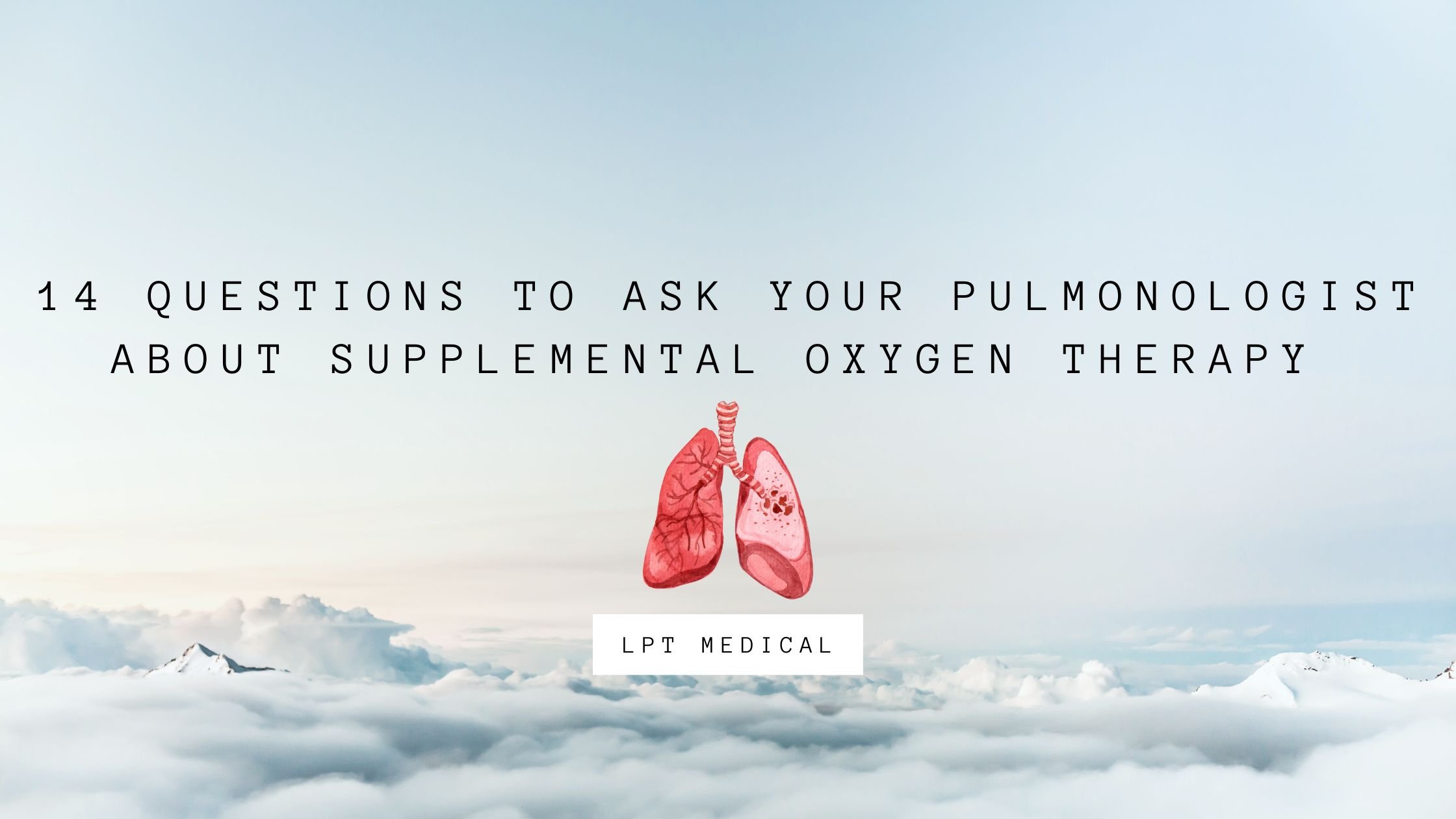
Supplemental oxygen is a type of medical therapy used to treat chronic lung conditions like cystic fibrosis, pulmonary fibrosis, and COPD. The aim of supplemental oxygen is to maintain a patient’s blood oxygen levels which are vital for systemic health. Every organ in the body requires oxygen in order to function properly, so using supplemental oxygen as it’s advised by your doctor can provide you with immense short- and long-term benefits.
Despite how important supplemental oxygen is for respiratory patients, receiving a prescription for oxygen therapy can be a scary experience. You likely have a lot of thoughts and concerns running through your mind and you’re likely overwhelmed by the prospect of being connected to an oxygen delivery device. While these concerns are certainly justified, it’s important to take a step back and begin to clarify your concerns with your doctor. Chances are, as you learn more about oxygen therapy and become more experienced with using it, many of your concerns will begin to disappear.
To help you organize your thoughts, we’re going to be discussing 14 questions you should ask your pulmonologist about supplemental oxygen therapy. Feel free to either print out this article or take notes so that you know exactly what to ask your doctor during your next visit. If you enjoy this article and you’re looking for more information, be sure to read through our post titled “16 Questions You Should Ask Your Doctor About COPD.”
1.) Is Oxygen a Necessity or a Suggestion?
Chances are, you or someone that you know has fallen back on a prescription at some point. Either you never make it to the pharmacy to pick up your medication or you simply stop using the medication for one reason or another. This Harvard Medical report states that many people either forget to use their medication, or they never fill it due to high copayments. So, naturally, you might wonder whether or not your oxygen therapy prescription will follow a similar trend. As a general rule of thumb, you should take what your doctor says seriously, because it’s unlikely that he/she would make you go out of your way or spend extra money on something that isn’t necessary. However, it doesn’t hurt to address these concerns so that your doctor can clarify the rationale behind your oxygen prescription.

2.) What are the Benefits of Oxygen Therapy?
The second thing you should ask your pulmonary doctor about are the benefits you can expect to reap from using supplemental oxygen. The air around us contains about 21% oxygen, but for someone with impaired lung function, this is not always enough for them to sustain their blood oxygen levels. The goal of oxygen therapy is to provide the lungs with a higher concentration of oxygen in order to reduce the load on the lungs. You may experience additional benefits from using supplemental oxygen based on the severity of your disease. Be sure to ask your doctor about this.

3.) What is My Flow Rate?
Your flow rate determines the amount of oxygen that you will be receiving when you put on the nasal cannula. It’s imperative that you know the exact amount of oxygen that you should be receiving because inhaling too much oxygen can lead to a condition called oxygen toxicity. This condition results in dizziness, fatigue, nausea, and eventual lung damage. Conversely, receiving too little oxygen will not provide you with the full benefits of supplemental oxygen.

Oxygen flow is measured using one of two different measurements. Pulse dose oxygen devices are measured in milliliters per minute (ml/min) and continuous flow oxygen devices are measured in liters per minute (LPM). The amount of oxygen that you’re prescribed will be based on the severity of your respiratory impairment, but generally speaking, most people need less than 2 LPM of oxygen.
4.) How Many Hours a Day Should I Use Oxygen?
Knowing how long you should be using oxygen is just as important as knowing your oxygen flow setting. If you’re using oxygen inconsistently, you might see a lot of your respiratory symptoms start to return. Long-term oxygen therapy is usually done for at least several hours a day, and your doctor will work with you to determine the best time to use it. If your doctor prescribes you with 24/7 oxygen, then you should discuss with your doctor about using an oxygen concentrator which doesn’t need to be refilled constantly like oxygen tanks or liquid oxygen tanks.

5.) What Type of Oxygen Device Should I Buy?
You might be surprised to find out how many oxygen devices there are on the market. You’ll have a whole host of options to choose from including traditional oxygen tanks, liquid oxygen tanks, stationary oxygen concentrators, and portable oxygen concentrators. But as someone who’s new to supplemental oxygen, you likely don’t know where to even begin with choosing one of these. Your doctor will likely have some information for you regarding which oxygen devices you should avoid and which ones you should consider.

It’s important to be careful when you’re purchasing an oxygen device. You may encounter companies that try to sell you oxygen without a prescription or that boasts prices that are significantly lower than any other company. However, these are most likely scams. Before making any decisions, be sure to research the company that you’re buying from to make sure that their products are reliable and that they follow all laws and regulations. For more information about how the U.S. Food and Drug Administration (FDA) regulates oxygen, please visit this page.
If you need a quick reference the ARYA Airtivo Max is a pulse flow portable oxygen concentrator that only weights 4.2 pounds, and has pulse flow operational setting from 1 through 6. This is a best selling oxygen device. It is very popular among oxygen users that live active lifestyles. The battery powered device are great for travel and everyday activities!
6.) Is it Okay to Adjust My Flow Rate Depending on How I’m Feeling?
If you have a chronic respiratory condition like COPD or pulmonary fibrosis, it’s not uncommon for symptoms to come and go. One day, you might be out of breath or lightheaded and the next you could feel perfectly fine. Because of this, you’re going to want to clarify with your doctor when it’s okay to adjust your oxygen flow and when you should not adjust your oxygen flow. The reason it’s important to ask this question is because your increase in symptoms may be due to something completely unrelated to your blood oxygen levels. In which case, increasing your oxygen flow would not benefit you.
.jpg?width=461&name=CAIRE_FreeStyle_Comfort-Nursery_10%20(1).jpg)
7.) How Can I Track My Blood Oxygen Level?
A pulse oximeter, or pulse ox device, clips onto your finger and measures the saturation of oxygen in your blood (SpO2). They are noninvasive and they work by passing rays of light through your finger to measure the amount of oxygen-carrying hemoglobin. While they aren’t the most accurate method of measuring blood oxygen levels, they are very lightweight and portable meaning you can pack one in your purse or handbag for easy access. If your doctor hasn’t already provided you with one, it’s worth mentioning it so that you have a way of monitoring your oxygen levels. To learn more about blood oxygen levels, read this post.

8.) Is Oxygen Therapy Safe?
Since oxygen is a controlled substance in the United States and requires a prescription, you may be wondering if it’s even safe to use in the first place. The answer to this question is “yes,” however, there are some things you should be aware of. Firstly, as aforementioned, using more oxygen than you’re prescribed will put you at risk of experiencing oxygen toxicity. Secondly, the safety of oxygen therapy depends heavily on the type of oxygen device you’re using.
Traditional oxygen tanks are the most dangerous because they contain compressed oxygen and they’re also heavy and bulky. Portable oxygen concentrators are the least dangerous oxygen device because they are lightweight and do not contain compressed oxygen. Oxygen is an “oxidizer” meaning it increases the flammability of anything it comes into contact with. So, you should never smoke near your oxygen device or use it near an open flame.
9.) Should I Be On Oxygen When I Sleep?
If your doctor prescribes you with 24/7 oxygen, you might be wondering how this will work when you’re sleeping. Your breathing rate and depth fluctuate a lot when you sleep so the amount of oxygen that you’re receiving could change throughout the night. This is why it might be worth it to invest in a portable oxygen concentrator like the Caire FreeStyle Comfort or the Inogen One G5. Unlike oxygen tanks, these devices closely monitor your breathing as you sleep and adjust your intake accordingly.

If you have a sleep disorder like obstructive sleep apnea (OSA), you may need to use your PAP device and your oxygen device at the same time while you sleep. PAP therapy is of critical importance for OSA patients because it keeps their airways open as they sleep allowing them to get restful sleep without interruptions. To use your CPAP device with your oxygen device, you need to be using a continuous flow oxygen unit and have a bleed in adapter that connects the tubing together. The Respironics SImplyGo is the perfect portable oxygen concentrator for CPAP compatibility.
10.) How Can I Eliminate Discomfort While on Supplemental Oxygen?
For the most part, oxygen therapy shouldn’t cause any discomfort. However, some people encounter issues with the nasal cannula such as irritation inside the nose due to dryness or some other reason. Humidifiers can actually be attached to your oxygen device to help ease the discomfort and there are a number of other accessories you can purchase that make the process more comfortable. We actually wrote a guide discussing some of the issues oxygen patients face and how to solve them. Check it out here.

11.) Can I Exercise on Oxygen?
Consistent moderate exercise is crucial for pulmonary wellness. Not only does exercise improve the strength of your lungs but it also increases the efficiency that your heart pumps oxygen throughout your body. So, just because you’ve started oxygen therapy does not mean that you should stop exercising. Check out this post which has some tips for exercising with an oxygen device and be sure to ask your doctor for advice as well.

12.) What Do I Need to Know to Travel With Oxygen?
Traveling around the world with COPD is much easier than ever before thanks to portable oxygen concentrators. The Federal Aviation Administration (FAA), the organization that oversees all commercial flights in the United States has approved most POCs for in-flight use. However, to make sure you have everything you need, you should contact your airline at least 48 hours before your flight. Most airlines require that you have at least one and a half times as much battery life as the duration of the flight. This will make up for any delays that may occur before and after you land.

13.) How Do I Maintain My Oxygen Device?
With the advent of the novel coronavirus, cleaning has taken on a whole new meaning. No matter what type of oxygen device you decide to use, you should take the time to clean it regularly. What’s more, nasal cannulae and oxygen tubing should be replaced every two weeks to ensure it’s clean and ready for use. If you purchase a portable oxygen concentrator you should remove the particle filters each week and wash them off. This will ensure that the air you’re inhaling through the cannula is clean and free of dust and dirt.

14.) Will I Need to Get Retested For Supplemental Oxygen?
Doctors typically use arterial blood gas analysis, pulse oximetry, and various lung tests to determine your need for supplemental oxygen. However, you may need to take on-going tests to help your doctor determine whether or not you still need oxygen in the future. Ask your doctor what kind of tests you will need to take and how often you should come in for a checkup once you are using your oxygen device. Some patients find it helpful to get a certificate of medical necessity which can help you file insurance claims and apply for benefits.

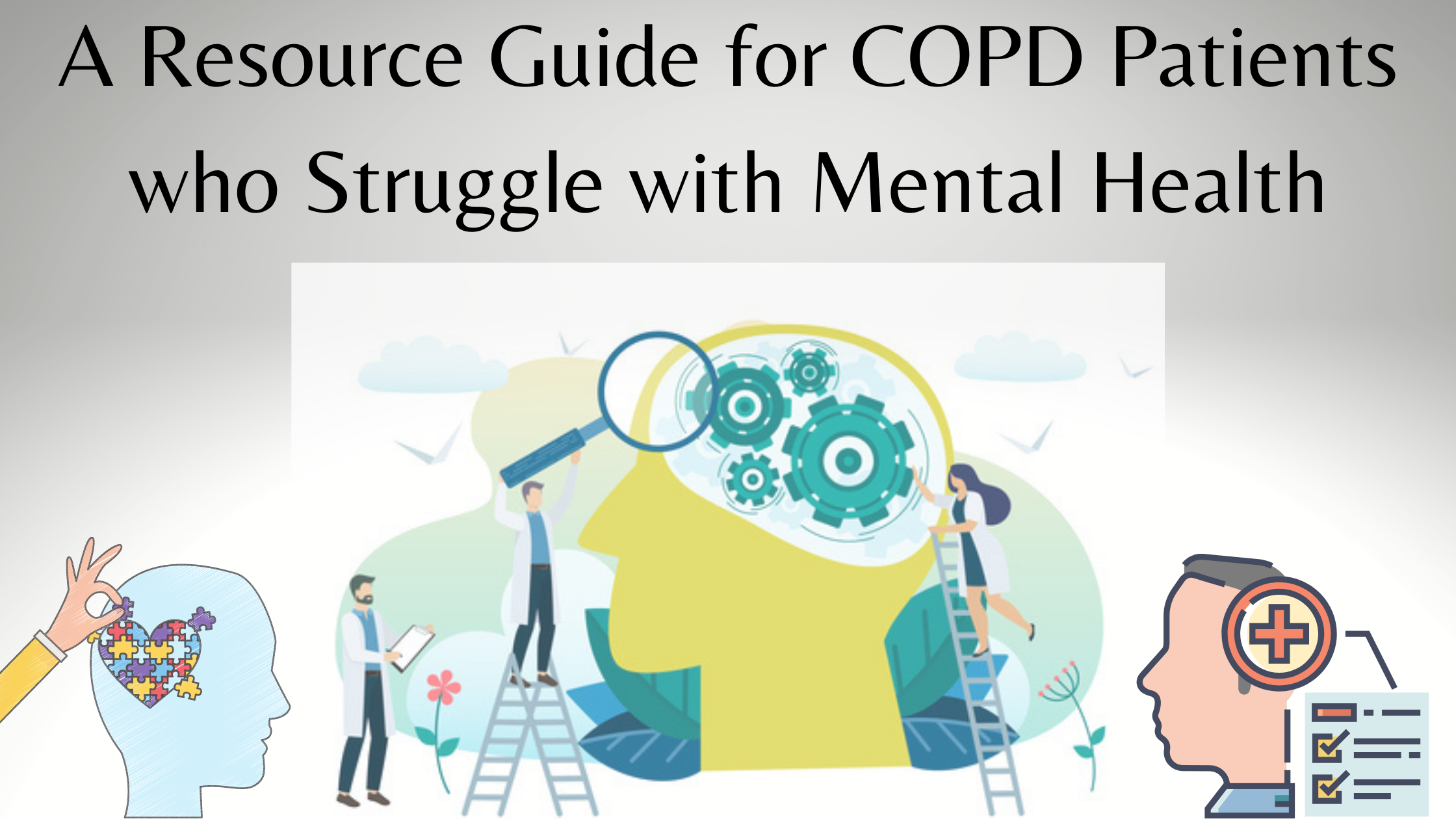
COPD effects more than just your lungs and how well you can breath. It also influences your mental state causing irrational behavior or mood swings, and can even lead to depression and anxiety.
People with COPD can sometimes be irritable and come off as cranky. If you struggle with mood swings and other mental health issues that seem to be related to your COPD, this article is for you.
According to a review, “Anxiety and Depression in Patients with Chronic Obstructive Pulmonary Disease (COPD) — A Review,” about 50 percent of people living with COPD exhibit symptoms of anxiety and depression. Another recent study in the USA reported that less than a third of COPD patients with major depression received the appropriate treatment.
Evidence suggests that people with COPD are very susceptible to depression, stress, and anxiety due to a number of reasons, one being that their life as they knew it, is over in some ways, but also a vicious cycle of COPD symptoms impacting mobility, independence, and other qualities of life. These anxious and/or depressed feelings can make it very hard for you to care for yourself and adhere to your treatment regime.
Introduction

Mental health in general is a delicate thing, something as normal as aging can initiate depression and anxiety in folks who have never had these mental illnesses before. This is something called environmental or situational depression, where outside factors influence the way someone reacts and feels emotionally. Clinical depression is a biological imbalance of chemicals in a person’s mind that makes them react and feel a certain way.
The fact is, everyone feels sadness because everyone goes through sad experiences. It is a natural human emotion. On the other hand, clinical depression is a serious condition that can have a profound impact on a person’s everyday life, and oftentimes for no reason at all.
Situational depression is known medically as “adjustment disorder with depressed mood.” In many cases it will resolve over time, and therapy sessions may be recommended in order to ease the recovery process.
As you read this article, it is important to categorize your own emotions based on this criteria in order to understand and get the best help for yourself. If you need help deciphering your symptoms from being clinical compared to situational depression, speak with your doctor or a mental health professional who is qualified to diagnose these illnesses.
You can also visit this source about the differences between situational depression versus clinical depression:
We want to preface this article by saying that we are not a mental health organization, nor do we specialize in any kind of therapy, however we work with oxygen users who are in some of the most severe stages of their pulmonary disease and we try to help them in the one way we are qualified to help: Providing the best, most reliable, and affordable oxygen equipment on the market along with educational resources. If you are interested in learning about any of our portable oxygen equipment, after reading this article you can reach us at 1-800-946-1201, or simply leave a comment on the blog so we can reach out to you!
We have developed this article for our readers who may need to seek outside help for their mental health conditions, and we hope this article can help you find the resources in order to do so.
How does mental health impact people with COPD
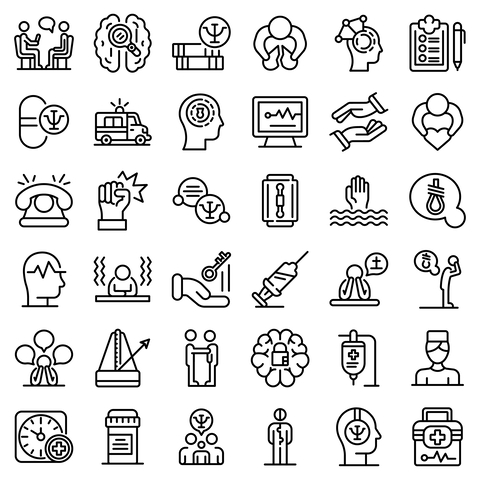
There is a lot of research about the ways in which COPD patients suffer from depression and anxiety. In a study by The National Center for Biotechnology Information a study was conducted about COPD patients and how anxiety and depression can contribute greatly to COPD-related death, notably by reducing quality of life and lack of adhering to treatment.
Depression can inhibit a person’s ability to care for themselves, and when you have COPD it is so important to maintain a healthy exercise regimen, take all of your medications, and adhere to your oxygen therapy needs. If you are depressed you are less inclined to take the necessary measures in order to protect yourself from this chronic illness that will inevitably get worse over time, and even take your life.
Quality of life is an attainable goal for you even if you have COPD, but mental health and depression can get in the way of those goals. On top of that, depression and anxiety can be challenging to identify and furthermore treat because those symptoms often overlap with COPD symptoms.
Identifying depression, anxiety, and developing an appropriate treatment strategy is critical to reduce the number of times you have to go to the hospital to seek medical treatment and overall improve your quality of life.
Why do people with COPD struggle with mental health
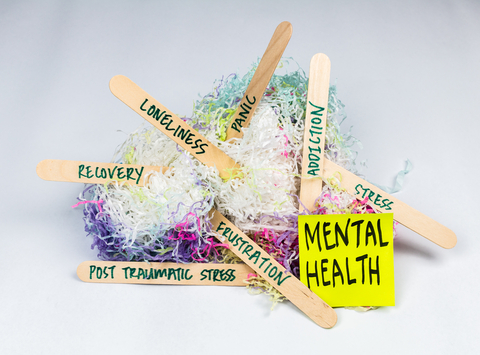
Chronic obstructive pulmonary disease (COPD) is a chronic inflammatory lung disease that causes obstructed airflow from your lungs. The symptoms include trouble breathing, excessive coughing, abnormal mucus production and wheezing. It is most commonly caused by long-term exposure to irritating gases or pollution, examples include cigarette smoke.
Emphysema and chronic bronchitis are the two most common conditions that contribute to COPD. These two conditions are likely to occur together. Every individual's symptoms vary in severity. COPD is a chronic illness meaning there is no cure, and it gets worse over time.
Simply the concept of having COPD can be considered depressing, especially for people who have grown up to be very active or were capable of physical activities in their youth and now they cannot do the things they love. Becoming short of breath after accomplishing a simple task can leave you feeling helpless or dependent on others.

Symptoms of anxiety and depression include:
- Fatigue
- Loss of interest
- Persistent sadness or anxiousness
- Inability to work, sleep, study, eat, or enjoy once-pleasurable activities
For people living with COPD depressive and anxious symptoms can have profound effects. Social isolation can cause anxiety and depression and on top of that the immobility that you might have already experienced as a result of breathlessness and lack of energy can be overwhelming to deal with. These cycles will impact your life in a very negative way.
Nevertheless, treatment is available and has been proven to increase the physical and mental state of COPD patients. These treatments include:
- Cognitive behavioral therapy
- Pharmacological treatments
- Self management
- Pulmonary rehabilitation relaxation therapy
- Eating healthy and good gut health
How to take better care of you mental health
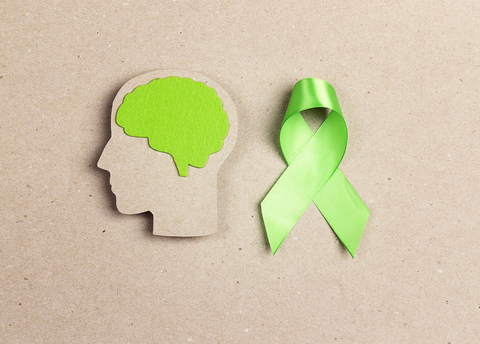
Similarly to exercising in order to strengthen your lungs and increase your physical abilities, it is important for COPD patients to also take care of their mental and emotional health. This means adjusting and learning how to deal with depression and anxiety when it arises but also recognizing triggers before it's super obvious.
Seeking care for depression and communicating with your caregiver are two basic tactics you can try in order to help manage your mental state of mind. We will talk about more complex and effective ways for dealing with anxiety and depression in the sections below. Read on.
Pulmonary Rehabilitation

One of the most beneficial and most underutilized treatments for COPD along with depression and anxiety, is pulmonary rehabilitation. Pulmonary rehab has been shown in multiple studies to improve the depression and anxiety associated with COPD, and it can do more for those symptoms than any kind of medication in many cases.
A pulmonary rehab course is a general program that helps to improve your lifestyle and wellbeing as you are living with chronic lung conditions.
In a pulmonary rehabilitation course you will learn how to use exercise training in conjunction with medical therapy, nutritional counseling, COPD education, and psychological counseling and/or group support.
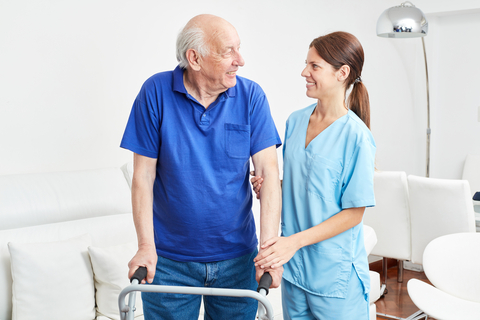
Pulmonary rehabilitation courses will provide you with a supervised exercise program that you can do inside and outside of the facility, two to three days a week, for up to three hours per day. Just having a place to go and things to do can be very meaningful and enjoyable. And on top of that you will start working towards goals which can also help with depression and anxiety.
While you are at pulmonary rehab you are often monitored by a respiratory therapist, a physical therapist and an occupational therapist. You may also be involved in some group therapy and exercise classes. This way you will learn about your condition and talk to others about the emotional and psychological challenges all while getting physically stronger and more capable.
This is a space where other people are experiencing the same or in some cases worse symptoms than you are, and it is a great way to not feel alone in your diagnosis.
For more information on pulmonary rehabilitation and to find a program near you, visit the American Association or Cardiovascular and Pulmonary Rehabilitation
Pulmonary rehabilitation benefits are available through most major insurance companies.
Also you can find a document here that explains how to do exercises, COPD education, and how you can get into a pulmonary rehabilitation program.
Pharmacological treatments
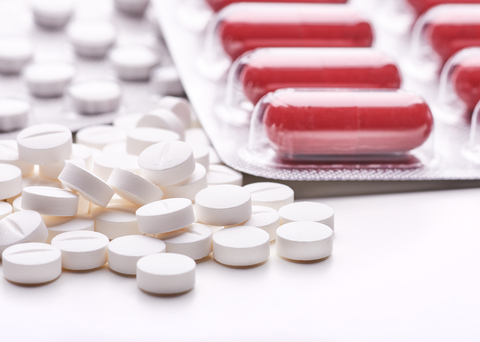
A new study suggests certain antidepressants may increase the risk of death in people with COPD by 20 percent. These drugs have side effects that are very dangerous for people with COPD to experience such as, sleepiness, vomiting, and can negatively effect the immune system cells. All of these side effects can increase the likelihood of infections, breathing issues, and other unfavorable events, especially in patients with COPD because it can lead to an exacerbation and hospitalization.
The medical world is quick to resort to a pharmaceutical treatment instead of looking into lifestyle changes, including pulmonary rehabilitation and generating a support network. Given the risks of antidepressants for COPD patients, COPD advocates say that it’s worth considering alternative approaches to pharmaceutical treatment.
Personalized behavioral therapy

The main psychological intervention for mental illness and COPD is cognitive behavioral therapy (CBT). CBT is increasingly recommended in the management of people living with COPD and it can include pulmonary rehabilitation programs, which we discuss in the sections above and notably reduces anxiety and depressive symptoms. CBT also requires an upfront investment in hospitals with pulmonary patients in order to train nurses and hospital staff being capable of fulfilling the needs of patients with COPD—both physically and psychological.
Research has found that CBT was most effective in reducing anxiety symptoms in COPD patients and has a significant impact on their quality of life as well as their ability to keep physically active and can also improve survival in the long-term.
This is somewhat out of your control as a COPD patient because the hospital is responsible for investing in upfront costs that includes training nurses and finding resources to implement cognitive behavioral therapy for their patients.
It is believed that the implementation of personalized strategies to address your unique psychopathological traits is essential, but this requires a lot of work by your healthcare team and willingness and dedication of their institution as well.
Self Management
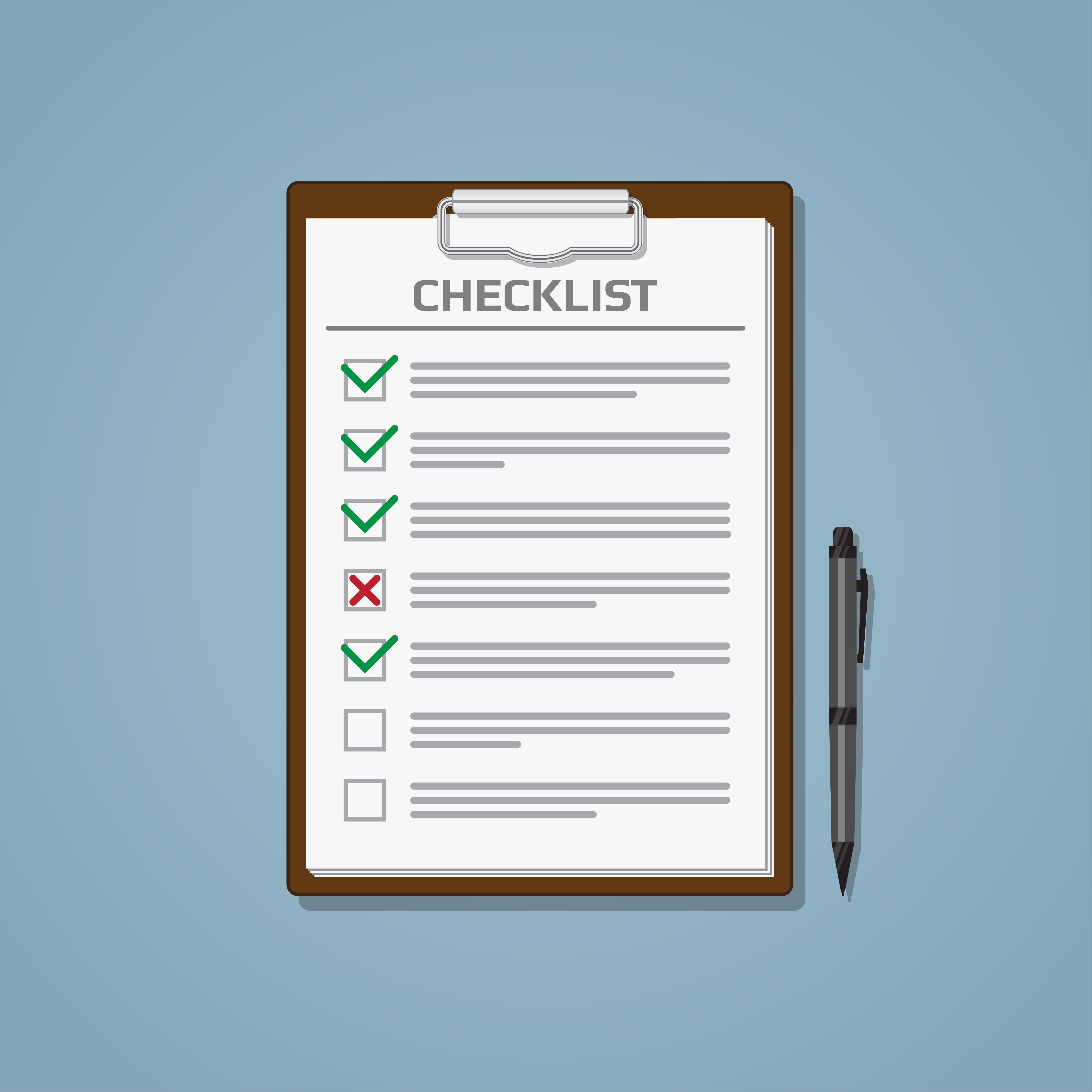
Self management is a great way for you to address your mental health complications rather than depending on cognitive behavior therapy programs that might be outside of your means. Interventions have been shown to improve patients’ quality of life and reduce the number of emergency scenarios..
Self-management interventions vary in content, delivery, and intensity, which can make it difficult to determine what parts of these interventions are most effective. It is best for you to do what works for you and leave the rest.
Here are a few stages of self-management:
- Noting what your normal symptoms feel like, and addressing any changes throughout the day or night
- Being capable of determining when you are having more severe symptoms versus when you are having a serious exacerbation.
- writing down and understanding which COPD symptoms initiate your moods
- Setting up a rescue pack
- Accepting your condition
- Adjusting to a new normal
- Slowing down the progression of your disease through diet, exercise, and oxygen therapy

Self managing your condition means monitoring your symptoms when stable and to take appropriate action when symptoms worsen. You can also be prescribed a rescue pack for when you are at risk of an exacerbation, this can ease you anxiety about having an exacerbation because you will feel more prepare and confident handling emergency situations.
Many illnesses, such as COPD, require an internal acceptance of the condition. You will have to come to terms with the likely course of the disease, as well as possible complications, and a different lifestyle.
As a result of breathlessness and other COPD symptoms, it is common to get complacent, and avoid exercise as an outcome of this complacency. This is reasonable in the beginning, but can be very harmful for your physical well-being in the long term, also causing unnecessary mental difficulties to develop.
Eating a well balanced diet

Eating healthy goes for anyone who struggles with mental health problems, not just people with COPD. Human gut health is closely related to our chemical receptors in our brains, the relationship is so strong that one influences the other directly, which is where the saying, “Go with your gut” came from.
There are strong links between digestion and your mood, digestion and your health, and even digestion and the way you think. This is because inside your gut is another “brain” like system, called the enteric nervous system (ENS).
The ENS is composed of more than 100 million nerve cells lining your gastrointestinal tract from esophagus to rectum. This system controls every part of your digestion: Swallowing, releasing enzymes that break down food, controls blood flow that helps with nutrient absorption, and elimination. Amazingly, while you ENS is digesting, it is also communicating with your brain.
It is known now that your ENS may trigger big emotional shifts, whereas before researchers thought it was only the other way around thinking that anxiety and depression contributed to gastrointestinal problems. Recent studies show that irritation in the gastrointestinal system may send signals to the central nervous system (your brain) that trigger mood changes and even depressive and anxious feelings.
So how does gut health relate to what is happening inside your lungs, and can the nature of COPD influence the health of your gut? In fact, your lungs and gut are closely related, studies have shown that there is a clear link between inflammatory intestinal conditions and inflammatory lung problems.
Many people with COPD also suffer from conditions that may be rooted in or contribute to poor gut health.
The conditions listed below are often experience in conjunction with COPD and will also impact your gut health:
Inflammatory and autoimmune diseases
Besides eating a well-balanced diet, there is not a lot else you can do in order to improve your gut health besides the potential capabilities of probiotics.
Probiotics

Probiotics are “good bacteria” that is supposed to increase the amount of infectious fighting bacteria that already lives inside your gut. These microbes fight infections and do a lot to contribute to the balance and well-being in your digestive tract. Therefore, probiotics are living microbes that you can take as a supplement or eating probiotic rich foods, in hopes that it will add to the healthy bacteria in your gut and fight off the unhealthy bacteria.
Probiotics are one of the mainstream media treatments for improving gut health. Research suggests that even more research needs to be done in order to prove any significant correlation between probiotics and how strong its contribution to a healthier gut. However, if you have COPD, and if your doctor agrees, taking probiotics can certainly help to maintain a healthier gut.
A healthier gut is going to contribute to less mood swings and hopefully help with depressive and anxious feelings as well.
Overview
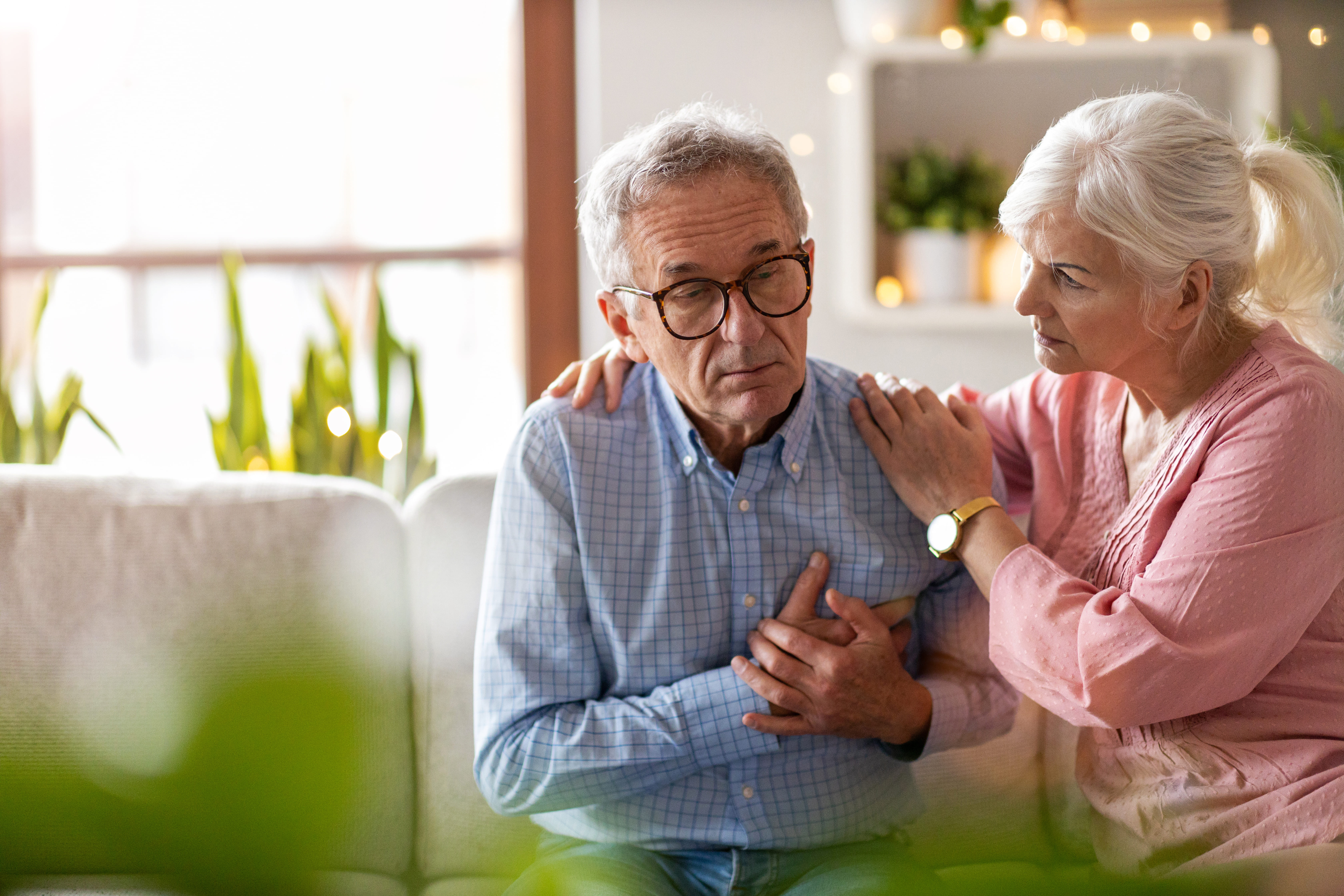
Overall, COPD will inevitably affect your mood in more ways than one, and for most people with COPD they will also experience subsequent depression and/or anxiety due to their respiratory disease.
There are a number of reasons as to why you may experience depression or anxiety throughout your diagnosis. For many people feeling short of breath can lead to an anxiety attack and it is notoriously a symptom of an anxiety attack to have trouble breathing, a vicious cycle.
Many people also struggle with depression because of their immobility, and not having the correct oxygen equipment to move around freely and independently.
Exercise and social gatherings are two important aspects of a person’s mental health, and if your oxygen device is not portable or too heavy to maneuver, you would benefit from investing in a portable oxygen concentrator so you are capable of more activity.
Pulmonary rehabilitation is a great way for you to get involved with a community of people who are in similar situations to share and express feelings. It also offers you an educational program where you can learn about your disease, and understand exactly what is happening inside your lungs and body. Not only are you socializing and learning about COPD, you also learn how to do exercises that you can also do at home in order to stay fit or get in healthier shape.
{{cta('fa8abc2a-1e88-4fa3-82fd-1cb5b9ed43b2','justifycenter')}}
Even though antidepressants may seem like the most obvious answer to combat depression and even anxiety, the side effects can be very damaging for people who have COPD. COPD advocates would argue that doctors are too quick to resort to pharmaceuticals before they offer lifestyle advice, recommend a cognitive therapist, or seek a pulmonary rehabilitation course.
Actually writing down your COPD symptoms and your feelings everyday and addressing the changes you recognize is a form of self management, and this can be a very helpful tool in managing depression, anxiety, or regular mood swings. By noting your moods that correlate with COPD symptoms you will be able to recognize what aspects of COPD make you emotional. By noting all of your triggers you can be more likely to avoid such irritants, and actually develop a plan to react more effectively and more positively. Acceptance is another important step in self-managing, which will come with time and effort. Don’t give up and remember you're not alone!
Eating healthy is a crucial part of maintaining a healthy gut, and your gut health is directly related to your mood. Meaning bad gut health can influence mood swings and depressive and anxious feelings. Eating healthy is one of the easiest yet effective ways to combat mental health issues, and while it might not be the cure to your depression or anxiety it will certainly contribute in a positive way!
Like COPD, depression and anxiety affects everyone differently, you will have different experiences than others, it boils down to taking what contributes positively to your life and leaving out what does not work. This might mean trying a few methods before you start feeling any better, but never giving up.
COPD is not curable but it is treatable, and the mental side effects that come along with COPD can also be man
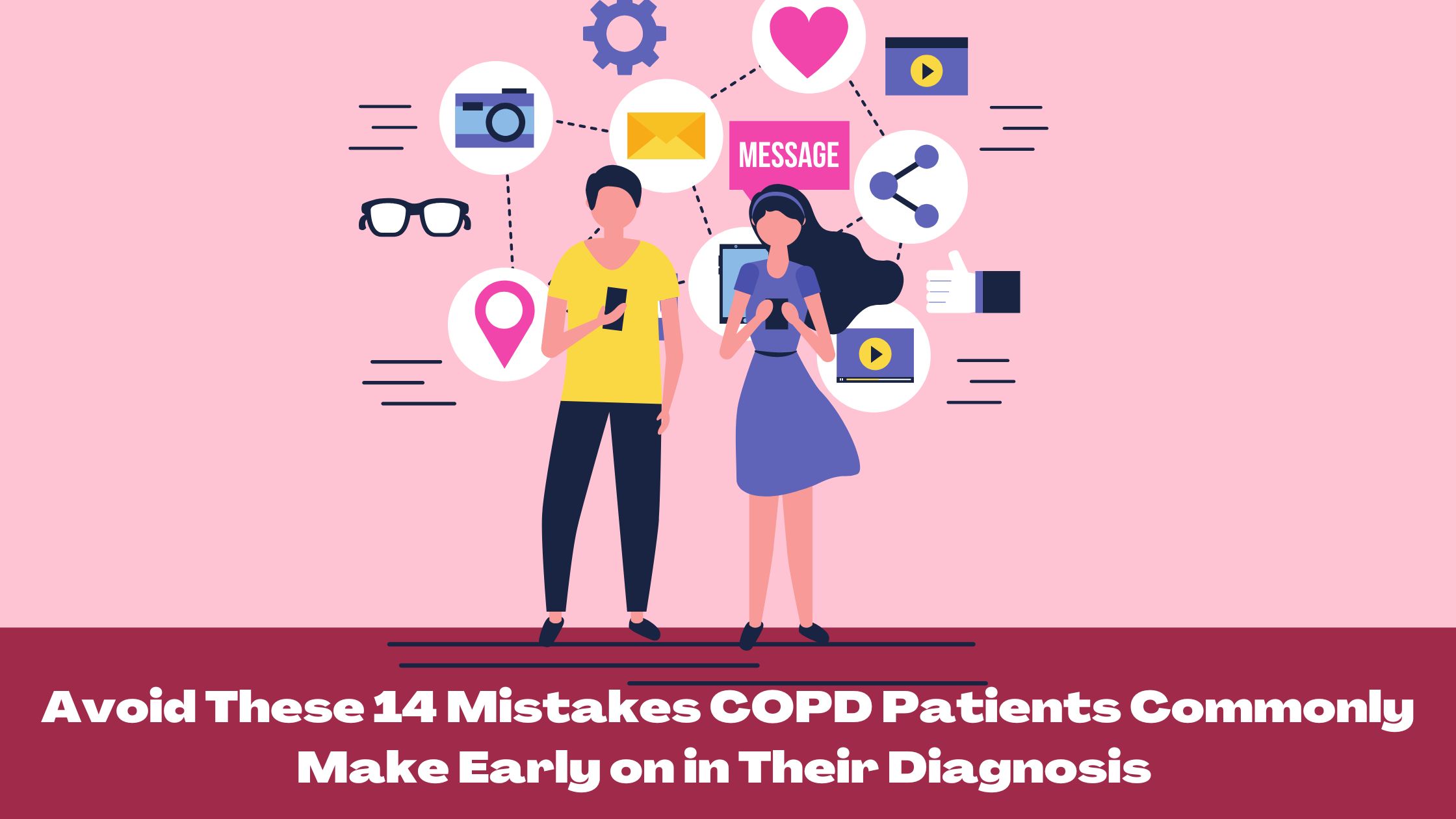
Are you newly diagnosed with COPD? Do not make these common mistakes, read this post to learn about what and how to avoid complications early on!
Getting diagnosed with COPD can seem overwhelming, especially when it catches you by surprise. It's often even more overwhelming to get used to all the new treatments, medications and lifestyle changes required to keep your lungs healthy, especially while you're still trying to come to terms with your diagnosis.
As a chronic disease, COPD requires constant work and careful decision-making to keep the symptoms under control. Because of this, it's no surprise that new COPD patients make a variety of mistakes that can affect their health and well-being.
Between making changes to your diet, exercise routine, medications, and many other activities of daily life, there are a lot of opportunities for error. As you adjust to life with COPD, it's important to avoid making mistakes that could serious consequences for your health, or at least catch and correct them early on.

That's why you should learn and pay attention to the mistakes that other new COPD patients tend to make. It helps you learn more about your disease, what to look out for, and how to keep your body and lungs as healthy as possible.
In this guide, we're going to help you avoid common pitfalls by showing you the mistakes that new COPD patients frequently make. Along with each mistake we've provided solutions so you'll know how to avoid that mistake and do the correct thing instead.
By taking the time to learn from others' mistakes, you'll be much less likely to encounter the same problems yourself. In the next sections, we'll give you all the information you need to avoid falling into the same pitfalls that other patients end up in.
However, it's important to remember that mistakes and struggles are inevitable as you adjust to the many changes that getting diagnosed with COPD brings. But if you educate yourself now, you can easily correct these mistakes and avoid serious problems that could permanently affect your health.
A major part of keeping your lungs healthy and keeping your COPD under control is learning everything you can about your disease. It also means being an active, motivated participant in your treatment and knowing what you shouldn't do just as much as the things you should.
The Mistake: Not Using Your Inhaler Correctly
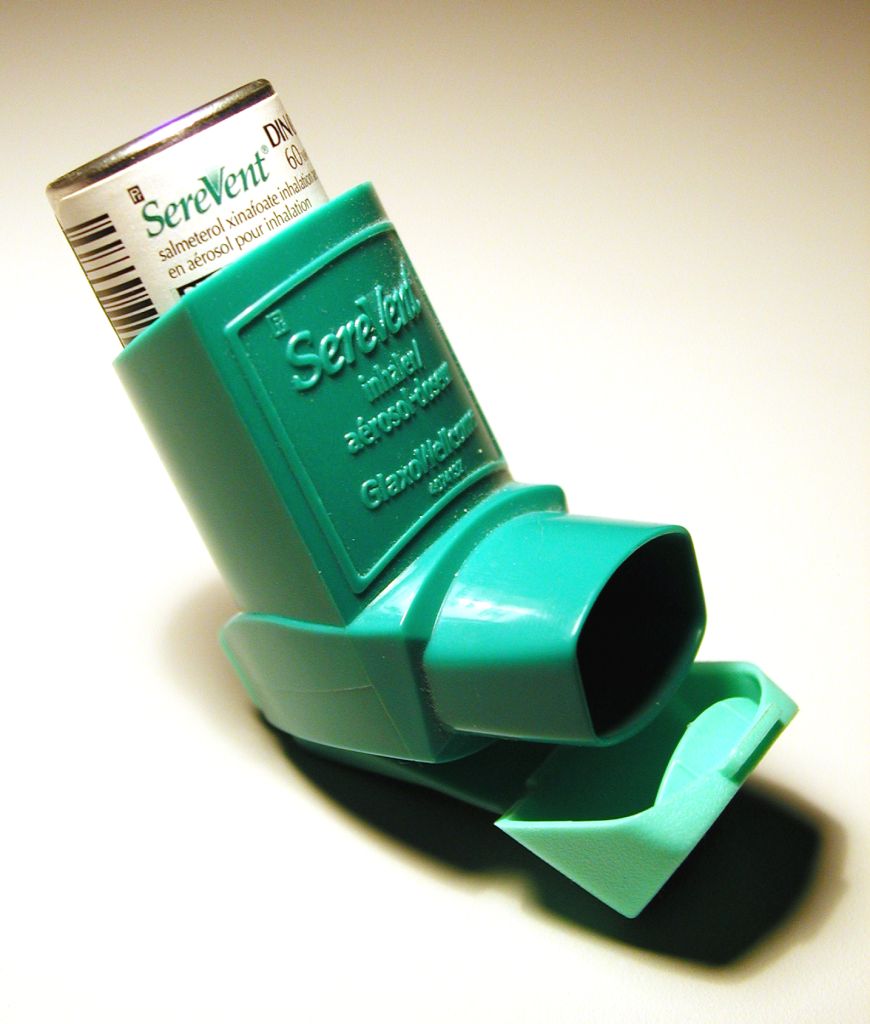
While inhalers may seem like fairly straightforward devices, a surprisingly large percentage of patients don't use their inhaler correctly. This happens to many patients who never learned the proper technique or forgot the correct steps over time. Other patients get too complacent or careless and skip steps to save time, not realizing each step is important.
Most of the mistakes patients make with their inhalers have to do with preparing the inhaler and using the right breathing technique. This is a serious problem, since these steps are necessary for getting the medication into the lungs where it needs to work.
Unfortunately, many doctors don't do their due diligence in training their patients to use their inhalers correctly. Even though doctors are supposed to check patients' inhaler technique at every appointment, it is often rare for them to take the time to do it properly in practice.
It doesn't help that many doctors don't even know proper inhaler technique themselves, meaning they can't give their patients adequate instruction. Luckily, the medical community has recently acknowledged the extent of this problem and is making efforts to raise awareness among doctors to correct it.
Here are some of the common mistakes to look out for:
- Not shaking the inhaler before each puff
- Not exhaling fully before using the inhaler
- Not holding the inhaler in the correct position
- Not timing your inhale with the spray from the inhaler
- Not inhaling deeply enough
- Not inhaling slowly enough
- Not holding your breath after inhaling the medication
- Inhaling through your nose instead of your mouth
Making any of these mistakes can result in getting too little medication or none of the medication that you need. This can be very dangerous when you suffer from COPD, because you need your full dose to prevent serious symptoms and exacerbations.
The Solution: Learning Proper Inhaler Technique
Because all inhalers are different, the only way to ensure that you're using your inhaler correctly is to re-read your inhaler's instructions and re-evaluate your technique. That means going over all the steps and guidelines in the information packet that comes with your medication.
This is important whether you're a newly diagnosed COPD patient or you have been treating your disease for some time. No matter how well you think you know it, it never hurts to double check.
You should also take your inhaler with you to every doctor's appointment so you can show your doctor exactly how you usually use it. That way, your doctor can identify any mistakes you make and show you the correct technique.
Every time you use your inhaler, make sure you follow every step and don't rush or cut any corners. Don't forget to shake or prime your inhaler if needed, and always remember to exhale before using it.
Timing your inhale with the spray from your inhaler is extremely important, but also difficult, which is why this step tends to cause patients the most problems. It may take some practice to time correctly, and you may need to use a spacer attached to the mouthpiece to help you do it right.

Studies show that when you inhale too early, then you only get about 35% of the full dose you're supposed to get. If you inhale to late, however, you end up spraying the medication in your mouth and throat instead of inhaling it into your lungs. This makes the medication ineffective and puts your lungs at risk.
To make sure you inhale at the right time and get the full dose, start breathing in slowly just before you press the button to release the medicine. Continue inhaling slowly and deeply as you feel the spray to draw the medication all the way into your lungs.
Remember that inhaling the medication isn't the last step; you still have to hold your breath to keep it in your lungs. Most recommend holding your breath for about ten seconds, then you can slowly and gently exhale.
If you are using an inhaler that contains steroid medications, then you still aren't done quite yet. To prevent the medication from drying out your mouth and throat, you need to rinse your mouth out with water before you're done.
If you ever have any questions or concerns about using your inhaler, don't hesitate to talk to your doctor. You can also ask your pharmacist to demonstrate how to use your inhaler(s) or to answer any other questions you have.
You can also find tips and information online for a variety of different types of inhalers. However, this should never be a replacement for the information you can get from your doctor and prescription information.
The Mistake: Not Knowing When to Take Which Medications
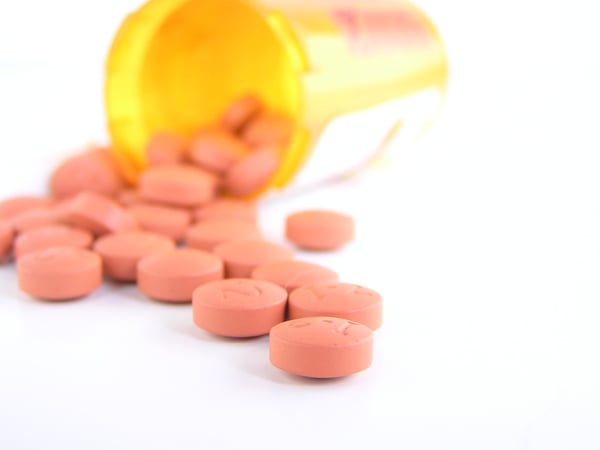
Nearly all COPD patients take two major types of medications: maintenance medications and quick-relief medications (also known as rescue medications). Both medications are delivered via inhaler, which is why patients sometimes get them confused.
This can be dangerous, because you need to use both medications correctly in order to treat your COPD effectively and keep your symptoms under control. Mixing up the two medications or forgetting to take them at the right time could make your symptoms worse or cause you to have a serious COPD exacerbation.
Other medications can be confusing to use, too, especially if you are only supposed to take them on certain occasions. For example, many doctors prescribe oral antibiotics and steroid medications for their patients to use as needed to prevent and treat COPD exacerbations.
The Solution: Following Your COPD Action Plan

Every COPD patient should get a COPD action plan from their doctor shortly after getting diagnosed. If you haven't received one yet, ask your doctor to work one up for you, as studies show that they help patients better manage COPD at home.
A COPD Action plan acts like a set of guidelines for you to follow based on how bad your symptoms are from day to day. For example, most action plans have three major “zones” that correspond to the severity of your symptoms; the first zone is for when you are feeling fine, the second for mild flare-ups, and the third for more serious symptoms and complications.
Click here to see what a sample COPD action plan looks like.
Every day, you should evaluate your symptoms to determine what “zone” to look at. Then, you simply follow the instructions in that zone for what medications and what doses you should take. Most action plans also include guidelines to let you know when its safe to exert yourself and at what point you should call your doctor when your symptoms flare up.
Because most COPD patients have several different medications to keep track of, it's extremely important to take the time to learn all of the important facts about each of your medications. That includes learning their full names, what they look like, and what you are supposed to use them for.
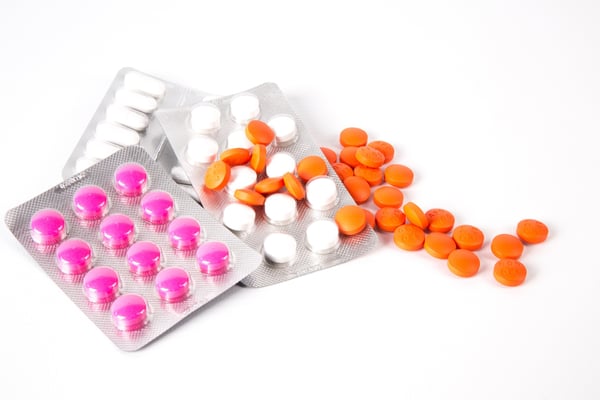
This ensures that you can match your medications with the instructions in your COPD action plan and use them exactly as your doctor directs you to. It also makes you much less likely to mix your medications up, take them at the wrong time, or forget about them altogether.
You should also bring a complete list of your medications with you anytime you go to the hospital or doctor's office. This will make it easier for the medical professionals who look after you to ensure you get the best treatment possible.
It is also important to bring this list with you whenever you travel, especially if you will be taking your medication with you on a bus, train, or airplane. You may need to present your list of medications to travel personnel, and it will come in handy if you need medical attention while you're away from your regular doctor.
The Mistake: Not Quitting Smoking
One of the most important things you can do for your health when you have COPD is to stop smoking. Unfortunately, too many patients believe it's too late for them to quit and continue to smoke even after their COPD diagnosis.
The thing is, even after you've developed COPD, there are still enormous benefits to quitting. In fact, having COPD makes it even more imperative to quit, since continuing to smoke can cause your disease to rapidly get worse.
COPD is a result of reduced lung function, often due to smoking, but continuing to smoke after COPD has set in will only harm your lungs even more. Smoking causes you to lose lung function at an accelerated rate compared to COPD patients who are able to quit.
Reduced lung function will make it even more difficult to breathe, do physical activities, and can significantly reduce your quality of life. If you quit, however, you may even see an improvement in your COPD symptoms, and you can enjoy the lung function and lifestyle you have for much longer.
While quitting smoking cannot reverse the damage that's already been done to your lungs, it can slow down the damage from getting worse. It can also increase your lifespan and reduce the number of exacerbations, flare-ups, and hospitalizations you experience because of your COPD.
Don't forget that quitting can reduce your chances for a variety of other serious health problems as well. For example, you can significantly reduce your risk for heart disease, lung cancer, and stroke if you successfully quit smoking.
The Solution: Making the Decision to Quit

It's important for every COPD patient to understand that it is never too late to quit smoking. Whether you are 25 or 65, you can improve your health and possibly even your lifespan by making the decision to quit today.
It's not an easy decision to make, and it's even harder to actually follow through. However, every year at least 350,000 smokers in the US are able to quit completely, and there's no reason why you can't be one of them.
Although quitting is hard, there are many things you can do to increase your chances of success. For example, using a quit-smoking medication or joining a quit-smoking program can make your quit attempt more likely to succeed.
When you make the decision to quit, remember that you are not alone and there are many ways to get support. First, you should talk to your doctor to see what kinds of medications and support programs are available to help you.
You may want to try nicotine replacement therapy, which is proven to increase smoking cessation rates. There are many different forms available, too, including nicotine gum, skin patches, tablets, oral sprays, and inhalers.
For more information on how to quit smoking, visit the CDC's website for a variety of helpful links and resources. You can also find helpful quit-smoking tips from the American Lung Association's website or from smokefree.gov.
Don't be discouraged if your first, second, or even tenth attempt to quit smoking ends up failing. It takes most smokers at least six attempts to quit smoking, and sometimes up to twenty, before they are able to quit long-term.
As the CDC puts it, “Quitting smoking is a marathon, not a sprint,” and you have to be in it for the long term if you truly want to live smoke free. Even though it is a long and difficult process, it is more than worth the benefits you will receive through improved health, reduced COPD symptoms, and your overall quality of life.
The Mistake: Not Eating a COPD-Healthy Diet

In order to keep your lungs and the rest of your body strong, you need to feed them the nutrients they need. That means eating a healthy, balanced diet every day to give your body fuel to work as efficiently as possible.
Unfortunately, many new patients find that controlling their weight and eating healthy foods is difficult with COPD. The disease can make it difficult to exercise and prepare healthy meals, both of which are vital for a healthy lifestyle.
COPD can make it difficult to lose weight and difficult to gain weight, which is why some patients struggle with being underweight while others struggle with obesity. Either situation is bad for your health and can make it more difficult to breathe.
If you get too few calories and nutrients, then your lungs won't have enough fuel to keep up with your body's needs. However, eating too much and gaining weight puts extra strain on your muscles and lungs, which can also make your COPD symptoms worse.

Also, because COPD makes your lungs less efficient, it means they have to work harder than healthy lungs in order to get enough oxygen to your body. This means that COPD patients need more calories and more nutrients to fuel the needs of their lungs and breathing muscles.
Another danger that many new COPD are unaware of is eating a diet that's too high in carbohydrates. Carbohydrates actually put extra strain on your lungs when digested, because they release large amounts of CO2 that then has to be processed through your lungs.
The Solution: Eating Whole Foods and Balanced Meals

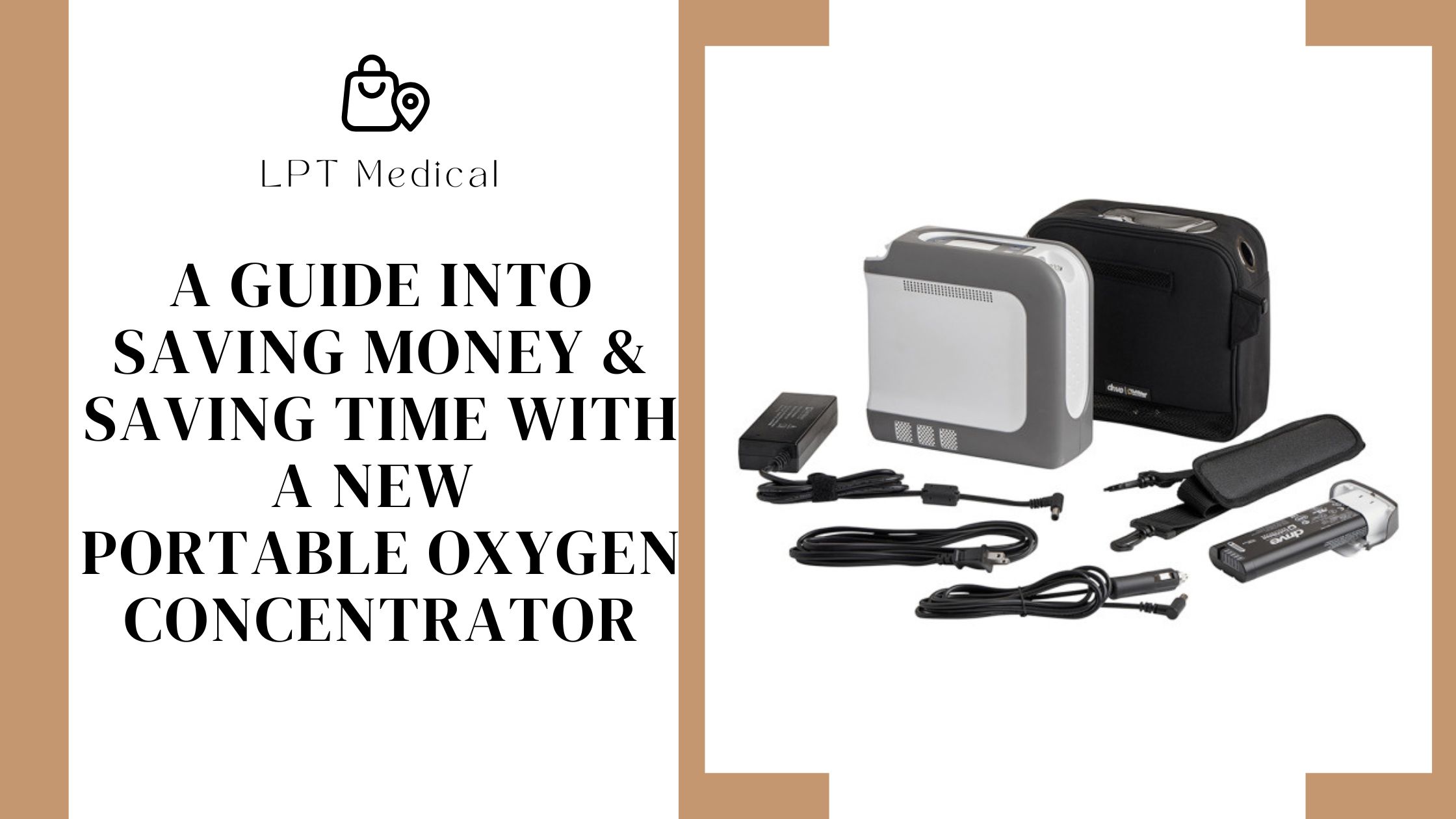
Is spending the upfront cash on a high-quality oxygen machine really worth It? How do you know you're making the best choice?
Read this blog to learn about all of the ways having a portable oxygen concentrator can impact you life. In this post, you will also learn which oxygen devices help you pursue your goals, while others may hold you back!
Oxygen and medical equipment for people with chronic conditions like COPD, lung failure, or cystic fibrosis is an essential part of daily life.
Some patients need oxygen 24/7, while others only need it while they sleep or just when they exercise.
No matter the case, getting the appropriate amount of oxygen is a crucial part of treatment that can add years to your life. Chronic lung conditions are also known as progressive disease, meaning they get worse over time.
The general decline in health or function will get worse faster if the condition goes untreated. Once the condition goes untreated, there are more risks of infection that could cause other issues not only in the respiratory system, but the circulatory system, bones, and muscles as well.

Treating your condition with a treatment plan set by you and your healthcare team is the only way you can avoid hospitalization, because there is no cure for chronic conditions, so once the damage is done, all you can do is try to keep it from getting worse.
To learn more about COPD and life expectancy you can read the article linked in blue.
What is Supplemental Oxygen Therapy

Once your disease progresses to a certain degree of severity, supplementary oxygen therapy becomes a crucial part of your treatment, and it is not “optional”. Your blood oxygen levels are so low that your body cannot function properly anymore, and without the therapy other parts of your system will break down and health issues will occur much more frequently.
Supplementary oxygen therapy is one of the principal treatments your doctor will recommend and prescribe to you once your blood oxygen levels reach hypoxic levels.
That's right…
You will need a doctor’s prescription in order to buy an oxygen device from a licensed distributor. Of course, there are knock off portable oxygen concentrators that are advertised to help people who have a hard time breathing, but these devices do not work and buying a cheap oxygen device will only cost you more money in the long run. Not to mention it will do no good in treating your condition, so it is also a waste of valuable time you could be spending saving your life!

Most oxygen users have the choice of which oxygen method they prefer to use…
You will most likely be able to choose between a portable oxygen concentrator, a liquid oxygen tank, or a gas oxygen tank.
Here is Why Portable Oxygen Concentrators Make the Most Sense Financially

There are pros and cons that come with each method, however, a portable oxygen concentrator is a far better choice for people who are looking to travel, maintain an active lifestyle, and are looking to save some money.
Save money on a portable oxygen concentrator?? There's no way!
Yup, in the long run you will actually save money by purchasing a portable oxygen concentrators from LPT Medical rather than spending the cash on refilling you tanks fro the rest of your life.

Once you own a portable oxygen concentrator like the ARYA Artivto Max you have an unlimited amount of oxygen. Simply recharge the device, and you're set to breathe all day long!
Portable Oxygen Concentrators Work Just as Well as Tanks, If Not Better!
So, how does your portable oxygen concentrator administer oxygen?

Your portable oxygen concentrator comes with either a 8 cell or 16 cell rechargeable lithium ion battery, and depending on the device you have it will last anywhere from 2 hours - 16 hours! The battery is what powers the device to extract air from the surrounding environment and the filter inside the device cleans the air of particles and purifies the oxygen you breathe in through the tubing into medical grade oxygen.

Portable oxygen concentrators are sleek and compact, compared to a cumbersome oxygen tank.
Most of the pulse flow oxygen devices are no larger than a regular sizer handbag, and they all come with a custom carrying that makes everyday chorus and traveling around with your oxygen a breeze.
Get the Oxygen you Need in Order to Take Care of Other Parts of your Life

The other factor you must consider while handling a chronic lung disease is that supplemental oxygen won’t cure anything, it will simply give you the oxygen you need that will support other parts of your life. This means that oxygen will help you get on track with your exercise routine, mental health, and sleep.
So you will need to treat the disease in other ways in order to minimize the risk of experiencing exacerbated symptoms. And besides things like taking your medications and bronchodilators, oxygen will give you the tools to exercise and sleep better, which will in-turn improve your mood and help with breathing related depression and anxiety.

Say No To Cumbersome Outdated Oxygen Tanks

That being said, having the right oxygen equipment makes a big difference when it comes to the user's experience and overall livelihood.
Tanks and canisters take away basic human freedoms and leave the oxygen patients at the will of their oxygen delivery service company, they are tied down to the enormous reservoirs while at home, and the canisters only last so long while on the go.
Also, don’t even think about traveling far… oxygen tanks and canisters are not allowed on any aircraft.

Traveling by car with an oxygen tank or the small canisters is always risky, not only because it's flammable, but also because the tank could run out and if you don't bring extra oxygen you will have to pay a pretty penny to get your oxygen refilled outside of your area.
What are your Portable Oxygen Concentrators Options

There are several brands of concentrators that are reliable and built with integrity, these brands include:
Brands like Inogen specialize in pulse flow devices and they recently put out a device that is remarkable because of its small size and weight yet its ability to give off oxygen at a rate sufficient for almost any oxygen user that needs pulse flow operation, and we are talking about the Inogen One G5.

The One G5 has long lasting battery life and it only weighs 4.7 pounds, meaning you can carry this device with you either in its custom shoulder bag, or in the One G5 backpack.
If you don't require a pulse flow operation that is higher than 4 or 5, you could use the Caire Freestyle Comfort or the Inogen One G3, and have a device that is lightweight and last for hours on one charge!

If you need continuous flow you can still use a battery powered portable oxygen concentrator! These devices will be heavier and larger than pulse flow devices because they require more power, but they are still very easy to move and travel with.
The Respironic Simply Go is the lightest weight continuous flow portable oxygen concentrator on the market, and it weighs 10 pounds!

It is equipped with a battery that is rated to last up to 6 hours of battery life on a pulse flow setting of 2 and up to 1.8 Hours of battery life continuous flow setting of 2!
If you are interested in the Respironics SimplyGoyou will also get:
- 1x Battery
- AC Power Supply
- DC Power Supply
- Custom Carrying Case
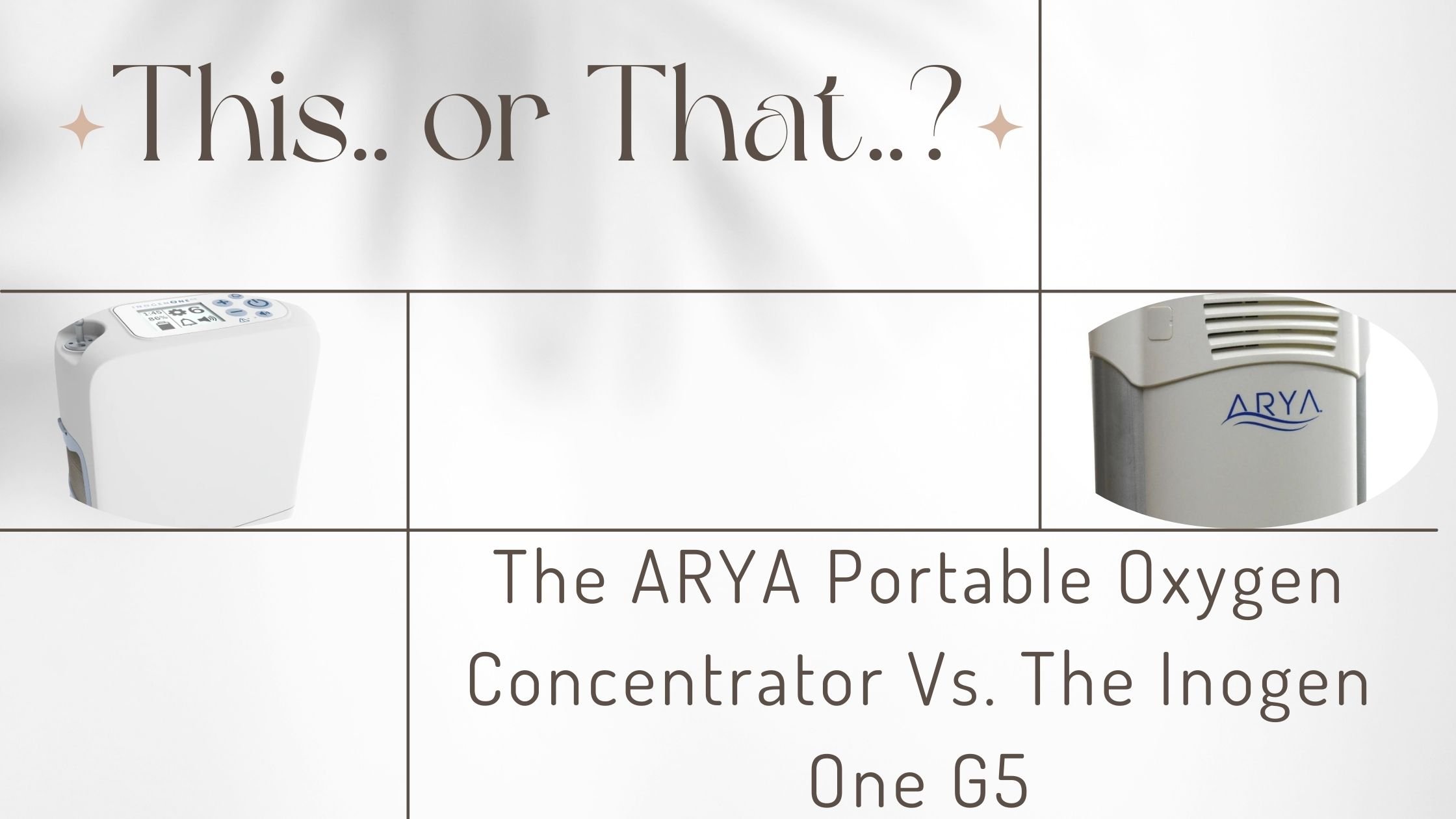
We are offering a new product: the ARYA Portable Oxygen Concentrator. We’re excited to offer this new pulse flow unit because it affords oxygen patients another great option when it comes to customizing their oxygen therapy experience.
But as you likely know, we try to avoid pushing out older products if there are still people out there who benefit from them. So, even with this new release, you’ll be happy to know that you will still have access to all your favorite oxygen concentrator brands like AirSep, O2 Concepts, Respironics, and more.
However, as usual, we want to provide you with all the resources you need to make an educated decision about your oxygen usage. There are hundreds of oxygen delivery machines out there, but many of them are either obsolete or they don’t provide patients with the benefits they want and need. It would be way too overwhelming to talk about every oxygen concentrator in one post, so we decided to break them up and compare two concentrators side-by-side.
In this post, we’re going to compare the new ARYA and the Inogen One G5. If you have any questions, feel free to leave a comment with your phone number or email address so we can reach out to you.
ARYA Portable Oxygen Concentrator Overview
ARYA is the top oxygen concentrator manufacturer in the world.

The ARYA portable Oxygen Concentrator is currently the leading pulse flow portable oxygen concentrator offered by the company. Despite only being on the market for just over a year, the ARYA has already made a name for itself by offering impeccable oxygen output, a lightweight design, and several unique features that aren’t offered by any other portable oxygen concentrator.
Inogen One G5 Overview
Inogen is — without a doubt — one of the most trusted and recognizable names in oxygen therapy. Inogen makes more portable oxygen concentrators than most companies out there, but they never lack when it comes to quality either. In fact, most oxygen patients and oxygen retailers eagerly await the release of new Inogen products, because they know they will break boundaries in terms of battery life, weight, and oxygen output.
The Inogen One G5 was released in the summer of 2019 and it’s the latest POC produced by the company. With outstanding battery life and lightweight design, it’s our pick for one of the best portable oxygen concentrators of 2020. Accompanying the release of the G5 were a whole host of accessories that allow you to customize your experience to your liking.
Maximum Oxygen Output
Maximum oxygen output is the total amount of oxygen a concentrator can put out in a given period of time. Many people who are new to oxygen therapy are confused by this because not all oxygen concentrators are measured the same. Continuous flow concentrators like the Respironics SimplyGo are measured in liters per minute (LPM) while pulse flow concentrators like the G5 and ARYA are measured in milliliters per minute (ml/min). The higher pulse flow setting you use, the more oxygen it will put out with each “bolus.”
Both the G5 and the ARYA have a high oxygen output for their class. The G5 has a maximum output of 1,260 ml/min with flow settings 1 through 6 and the ARYA has a total output of 1,050 ml/min with flow settings 1 through 5. Compared to other pulse flow concentrators, both these units provide a high oxygen output that’s more than enough oxygen for the majority of oxygen users.
Weight
The main reason for purchasing a pulse flow POC over a continuous flow POC is weight. While continuous flow POCs can be taken pretty much anywhere, they’re typically too heavy to carry on your shoulder or back. Instead, you’ll have to use a carrying cart which can be a huge pain. Pulse flow units, on the other hand, are light enough that you can use a shoulder strap or even carry it in your hands.
There isn’t a huge difference between the weight of the G5 and the weight of the ARYA. With the smaller 8-cell battery, the G5 weighs about 4.7 pounds and the ARYA weighs about 5 pounds. Side-by-side you probably won’t notice a difference between the two, however, if you have back pain the Inogen One G5 may be the way to go. Either way, lightweight portable oxygen concentrators are the standard, so don’t settle for anything less!
Battery Life
When you look back at the past decade of portable oxygen concentrators, it’s pretty amazing to see how far batteries have come. Several years ago, POC batteries would only afford you a couple of hours of freedom before you had to go home and recharge them. In many cases, it was better to use an oxygen tank because, even if they were bulkier, they enabled you to be out of the house for longer.
However, in this day and age, POC batteries have far exceeded our expectations. With the G5 double battery, you can run your device for 13 hours on a setting of 1 and a ARYA with the 16-cell battery can run for an impressive 16 hours without charging. This is more than enough battery life to be able to stay out all-day while living life on your own terms.
For most oxygen users, battery life is a top priority when choosing an oxygen concentrator. If you have a long-lasting battery, you’ll be able to see more and do more. For example, if you want to take a trip around the world, you don’t want to have to constantly stop what you’re doing to go back to your hotel in order to charge your portable oxygen concentrator. Even people with more severe COPD want longer-lasting batteries, which both the G5 and ARYA can offer.
Design
The ARYA and Inogen One G5 are both very well-designed portable oxygen machines. They have a solid outer shell which will help protect the internal components from damage and they’re compact enough that you can hold them at your side comfortably. The G5 was more based on the Inogen One G4’s look while the ARYA has a design similar to the Inogen One G3. Either way, it’s simply a matter of preference as to which one you like more.

One unique feature about the ARYA is its ergonomic shape. The expert oxygen manufacturers at ARYA noticed that there was no POC on the market with a shape that matched the natural curve of your body. So, with the ARYA, they added a slight curve to the device. When you’re walking around enjoying your day, your concentrator won’t be sliding around and causing a disturbance.
Another design feature you can find on both these concentrators is the easy-to-use interface. Rather than having a control panel with tons of buttons, the G5 and ARYA opt for a minimalist design. On the ARYA, there are only three buttons: two for the flow setting controls and one for the power. On the G5, there are five buttons. They control the oxygen flow setting, power, and visual and audio notifications.
Additional Features
Despite being very easy to use, these portable oxygen concentrators are some of the most feature-heavy on the market. The greatest part of all is that you’ll never be forced into using anything that you don’t want to use.
One of the additional features of the Inogen One G5 is a mobile application called the Inogen Connect. This was implemented with the release of the G4 and it was brought back due to popular demand. Essentially, it allows you to connect your POC to your smartphone or tablet via Bluetooth. Once that’s done, you’ll be able to view up-to-date information about your device like its battery life, column status, and oxygen purity status. You can even view your G5 user manual and troubleshooting information.
An additional feature on the ARYA is the ARYAView™ Telehealth Technology. This is similar to the Inogen Connect in that it shows you critical information about the status of your portable oxygen concentrator, however, it has some additional features that makes the ARAY one of the most advanced POCs ever created.
“Telehealth technology” is a rather new term in the medical field, but it refers to the use of technology to connect patients and clinicians over long distances. ARYAView™ connects to your POC just like the Inogen Connect, but in addition to providing information about your device, it’s securely connected directly to your oxygen supplier allowing them to remotely monitor and troubleshoot your device on command.

While telehealth technology still has a long way to come in terms of accessibility, it shows how far portable oxygen concentrators have come and where they could potentially go in the future. If you’re curious about testing this out, it may be a great reason to choose the ARYA over the Inogen One G5. Just remember that these are additional features, so if you don’t want to fuss with them then you don’t have to!
The Best Candidate for the ARYA Portable Oxygen Concentrator
Although ARYA may not be the most recognizable brand by the average consumer, the impact they’ve had on oxygen therapy and oxygen delivery is undeniable. They proudly provide military-grade oxygen supplies for the armed forces and they gladly offer the same quality products for oxygen patients back home. TheARYA Portable Oxygen Concentrator is just the latest pulse flow portable oxygen concentrator in their line of impeccable oxygen machines.
TheARYA excels in most aspects offering a high oxygen output, lightweight design, and the innovative ARYAView™ telehealth technology which allows you to get real-time troubleshooting assistance on the fly. The ARYA is recommended to anyone who needs 1,050 ml/min or less of oxygen and anyone who wants to live life on their own terms without being held back by a bulky oxygen device.
The Best Candidate for the Inogen One G5
Ever since its inception in the early 2000s, Inogen has been dead set on making oxygen more accessible and easy to use for oxygen patients all around the world. With each product release, they’ve accomplished this with flying colors. In fact, Inogen concentrators are so advanced that oxygen patients continue to use older generations of their concentrators many years after their release.
Since its release last summer, the Inogen One G5 has often been labeled “the best oxygen concentrator” due to having the highest oxygen output of any pulse flow concentrator, in addition to maintaining many of the other features patients love in their POC such as a lightweight design and long-lasting battery life. We recommend the Inogen One G5 to anyone who requires 1,260 ml/min of oxygen or less (flow setting of 6 or less).
Conclusion
There are many great portable oxygen concentrators for sale, but the ARYA and Inogen One G5 are just two of the latest and greatest. Whether you’ve just started your search for a POC or you’ve already narrowed down your choices, don’t hesitate to get in touch with one of our respiratory specialists to seal the deal. We’ll make sure you’re getting the oxygen machine that you want and need and we can answer any questions that you may have.


 So we can find the best portable oxygen concentrator for your needs!
So we can find the best portable oxygen concentrator for your needs!

